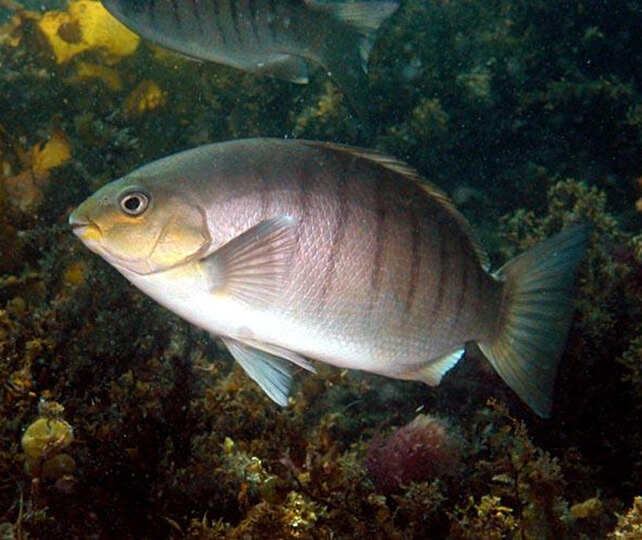Over 75% of commercial fish caught in Australia are estimated to spend part of their life cycle in estuaries and inshore wetlands.
Well-sheltered estuaries that support aquatic vegetation provide an important habitat for juvenile fish to develop. For example, estuaries:
- allow juvenile fish to shelter from predators and grow large enough to survive and reproduce
- provide food for fish in different stages of their lifecycles by harbouring a diversity of invertebrates
- are breeding grounds for fish
- help fish move between fresh and marine waters for breeding
- are rich in organic material including phytoplankton, zooplankton and detritus that are sources of food for many aquatic species.
Commercially and recreationally important fish that spend time in estuaries as juveniles include: black and yellowfin bream, sand and dusky flathead, mulloway (jewfish), Australian salmon, silver trevally, snapper, tailor, sand and yellowfin whiting, luderick, yellowtail kingfish and sea mullet.
Important native freshwater fish such as Australian bass, blue groper and long and shortfin eels also need healthy estuaries to complete their life cycle.
Port Jackson sharks, bull sharks, whalers and wobbegongs occupy estuaries intermittently for breeding. Large sharks such as tiger sharks and white sharks have been recorded in some of our larger estuaries.

Luderick (Girella tricuspidata)
Environmental change indicators
Fish are useful indicators of environmental change. Changes to the size of fish populations, the presence or absence of key species and disease can indicate the health and integrity of estuarine environments. Fish assemblages respond to water quality, habitat health and the overall productivity within an ecosystem.
Fish populations also vary based on estuary entrances. Estuaries with a naturally occurring permanent opening to the ocean will contain different species that may not be present in intermittently closed systems. Fish populations have adapted over time to the conditions of the estuary they live in.
The NSW Department of Primary Industries and Regional Development is responsible for monitoring, managing and protecting fish under the Fisheries Management Act 1994 and the Fisheries Management (General) Regulation 2010. The responsibility for threatened species and their management is shared between the Department of Primary Industries and Regional Development and the Department of Climate Change, Energy, the Environment and Water (Environment, Energy and Science) under the Biodiversity Conservation Act 2016.
Threats
The diversity and abundance of fish in estuaries is strongly influenced by available habitat. The loss of seagrasses and mangroves can significantly impact the recruitment and survival of estuarine fish species. Fish populations are under pressure from:
- loss of habitat
- the introduction of pests
- recreational and commercial overfishing.